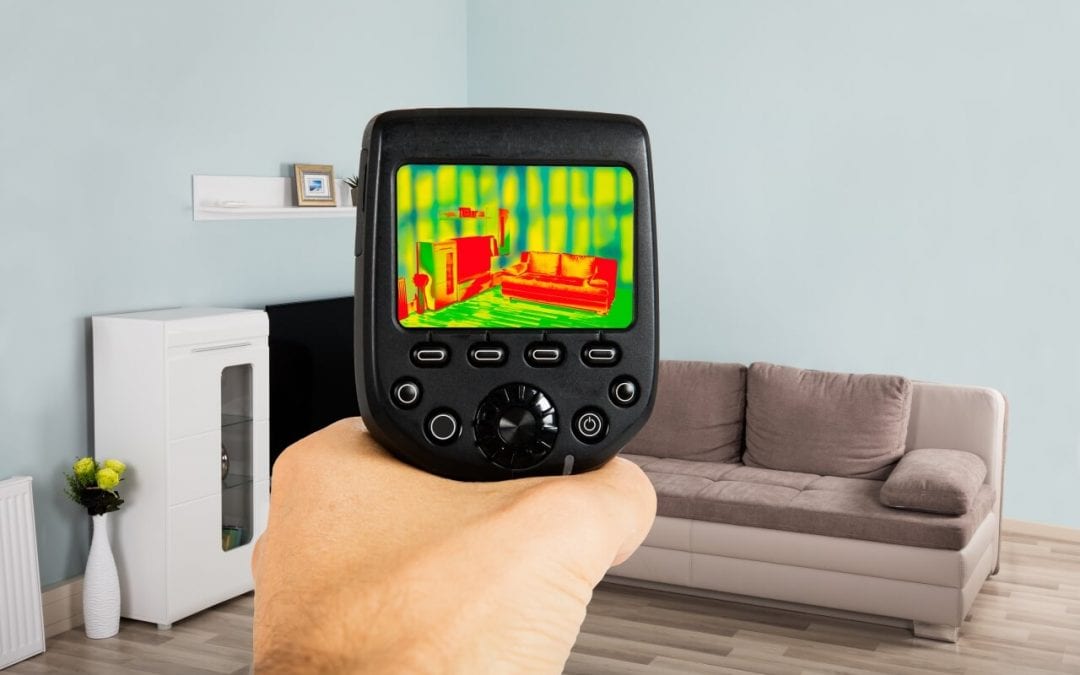Thermal imaging in home inspections is a valuable tool that helps give greater insights into a home. If you’re shopping for a home inspection, look for an inspector who has this capability. This type of technology provides a more robust and comprehensive inspection report. Let’s take a look at how a thermographic camera can be used during home inspections.
Uses of Thermal Imaging in Home Inspections
Infrared thermal imaging reads variations in heat signatures to reveal important information during the inspection process. Your inspector will use these temperature differences to gain insight into issues under floors, above ceilings, and behind walls.
Thermal or infrared imaging isn’t x-ray vision, but it does enable a well-trained home inspector to detect problems or conditions in a home that are unnoticeable to the naked eye.
A More Comprehensive Report with Thermal Imaging
After an inspection is completed, your home inspector will provide a full report. You’ll notice that items in the infrared images will range from light to dark in color. You are seeing an image of the energy detected by the thermal camera. For example, blues and purples are cooler temperatures than yellow, orange, and red.
Color differences might show a cool area behind the wall, which could mean that there is moisture in that space. The thermal image serves as a warning that the area needs further investigation.
What Can a Thermal Camera Detect?
Infrared cameras in home inspections can help reveal issues like moisture problems, pest infestations, electrical hotspots, and areas of heat loss and missing insulation.
Detect Electrical Hotspots
Electrical hotspots are not visible, however, they show up when using an infrared camera in home inspections. Warmer colors in a thermal image may indicate issues with the wiring or circuit breakers. It’s vital that electrical hotspots are detected during your home inspection because they pose a fire risk.
Identify Moisture with Thermal Imaging in a Home Inspection
Water damage is one of the biggest threats to your home. Moisture contributes to mold growth and has the potential to cause structural damage. Thermal cameras help find signs of moisture by detecting cooler areas around the home.
Detect Insulation Issues
It’s not always easy to identify insulation gaps that reduce energy efficiency. The thermal imaging process helps bring these issues to light. Locating and repairing energy inefficiencies will save you money on heating and cooling costs.
Select a Home Inspector Who Uses This Technology
Thermal imaging is a relatively new tool for today’s inspectors. This technology allows for a more thorough and complete home inspection.
Catawba Island Home Inspections offers home inspections with thermal imaging to Northwest Ohio. Contact us to request our services.

